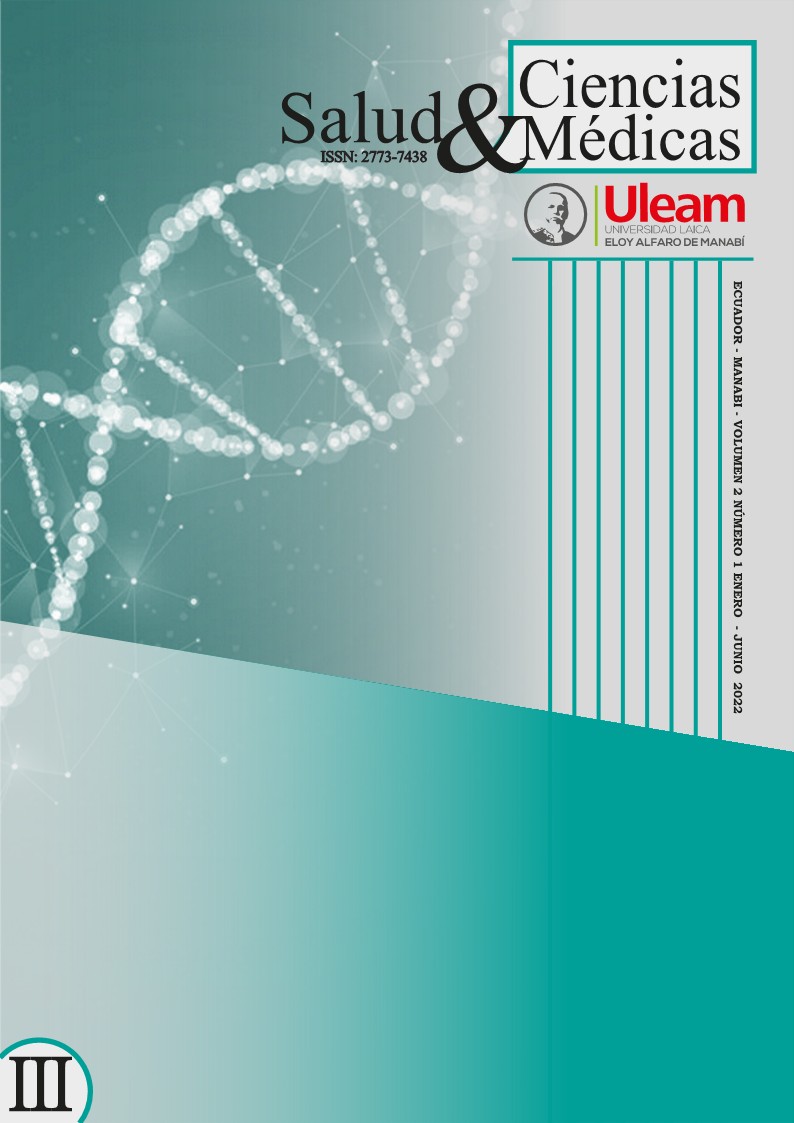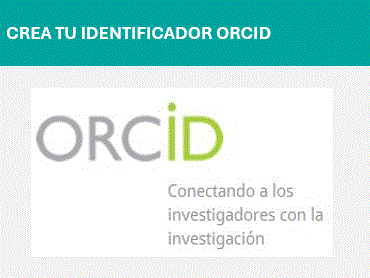Enfermedad celíaca
Jordi Alberto Chonillo Franco, Hector Paul Mera Resabala, María Johanna Zambrano García, Angie Leonor García Zambrano
Palabras clave:
Enfermedad Celiaca, Gluten, ATGt-2, EMA, DGP, Atrofia vellositaria, EnteropatíaResumen
Objetivo: La enfermedad celíaca (EC) es una patología crónica autoinmune caracterizada por enteropatía inflamatoria con hiperplasia de criptas y atrofia vellositaria, producto de la exposición al gluten en personas genéticamente predispuestas. Posee manifestaciones clínicas variadas tanto intestinales como extra intestinales, siendo en la actualidad considerada una afección sistémica. El diagnóstico serológico a pesar de poseer alta sensibilidad y especificidad, debe ser confirmado con biopsia. La dieta libre de gluten constituye el tratamiento principal, acompañado de terapias nutricionales y de soporte. Para el seguimiento clínico, está indicada la serología. En la enfermedad mal controlada, las complicaciones más frecuentes son el linfoma y adenocarcinoma de intestino delgado. Nuevos métodos diagnósticos y terapias farmacológicas en un futuro serán útiles en el manejo de la EC.
Citas
Lebwohl B, Sanders DS, Green PH. Coeliac Disease. The Lancet. 2018;391(10115):70-81. Disponible en: https://doi.org/10.1016/S0140-6736(17)31796-8
Remes-Troche JM, Uscanga-Domínguez LF, Aceves-Tavares RG, de la Barca AC, Carmona-Sánchez RI, Cerda-Contreras E, et al. Clinical guidelines on the diagnosis and treatment of celiac disease in Mexico. Rev Gastroenterol México. 2018;83(4):434-50. Disponible en: https://doi.org/10.1016/j.rgmx.2018.05.005
Gallegos C, Merkel R. Current Evidence in the Diagnosis and Treatment of Children With Celiac Disease. Gastroenterology Nursing. 2019;42(1):41-8. Disponible en: https://doi.org/10.1097/sga.0000000000000365
Muñoz Tello P. Prevalencia mundial de la enfermedad celíaca. Tesis de grado. Universidad de Sevilla 2018; Disponible en: https://n9.cl/5j108
Fasano A, Catassi C. Celiac disease. New England Journal of Medicine. 2012;367(25):2419-26. Disponible en: https://www.nejm.org/doi/pdf/10.1056/NEJMcp1113994
Roy A, Mehra S, Kelly CP, Tariq S, Pallav K, Dennis M, et al. The association between socioeconomic status and the symptoms at diagnosis of celiac disease: a retrospective cohort study. Therapeutic advances in gastroenterology. 2016;9(4):495-502. Disponible en: https://doi.org/10.1177/1756283x16637532
Catassi GN, Naspi L, Catassi C. Non-Celiac Gluten Sensitivity. En: Diagnosis and Management of Gluten-Associated Disorders [Internet]. Springer; 2021. p. 197-203. Disponible en: https://doi.org/10.1007/978-3-030-56722-4_16
Andrés JP. Isolation, identification and characterization of microorganisms involved in gluten metabolism: implications for celiac disease and human health [PhD Thesis]. Universidad de León; 2017. Disponible en: http://dx.doi.org/10.18002/10612/8862
Becker D, Wieser H, Koehler P, Folck A, Mühling KH, Zörb C. Protein composition and techno-functional properties of transgenic wheat with reduced α-gliadin content obtained by RNA interference. Journal of Applied Botany and Food Quality. 2012;85(1):23. Disponible en: https://ojs.openagrar.de/index.php/JABFQ/article/view/1995
Abadie V, Discepolo V, Jabri B. Intraepithelial lymphocytes in celiac disease immunopathology. En: Seminars in immunopathology [Internet]. Springer; 2012. p. 551-66. Disponible en: https://doi.org/10.1007/s00281-012-0316-x
Ferretti G, Bacchetti T, Masciangelo S, Saturni L. Celiac disease, inflammation and oxidative damage: a nutrigenetic approach. Nutrients. 2012;4(4):243-57. Disponible en: https://doi.org/10.3390/nu4040243
Verdu EF, Galipeau HJ, Jabri B. Novel players in coeliac disease pathogenesis: role of the gut microbiota. Nature Reviews Gastroenterology & Hepatology. 2015;12(9):497. Disponible en: https://www.ncbi.nlm.nih.gov/pmc/articles/PMC5102016/ 13. Piscaglia AC. Intestinal stem cells and celiac disease. World journal of stem cells. 2014;6(2):2
Disponible en: http://dx.doi.org/10.4252/wjsc.v6.i2.213
Ludvigsson JF, Leffler DA, Bai JC, Biagi F, Fasano A, Green PHR, et al. The Oslo definitions for coeliac disease and related terms. Gut. 1 de enero de 2013;62(1):43. Disponible en: http://dx.doi.org/10.1136/gutjnl-2011-301346
Tapsas D, Hollén E, Stenhammar L, Fälth-Magnusson K. The clinical presentation of coeliac disease in 1030 Swedish children: Changing features over the past four decades. Digestive and Liver Disease. 2016;48(1):16-22. Disponible en: https://doi.org/10.1016/j.dld.2015.09.018
Hujoel IA, Van Dyke CT, Brantner T, Larson J, King KS, Sharma A, et al. Natural history and clinical detection of undiagnosed coeliac disease in a North American community. Alimentary pharmacology & therapeutics. 2018;47(10):1358-66. Disponible en: https://www.ncbi.nlm.nih.gov/pmc/articles/PMC5910260/
Husby S, Koletzko S, Korponay-Szabó I, Kurppa K, Mearin ML, Ribes-Koninckx C, et al. European Society Paediatric Gastroenterology, Hepatology and Nutrition Guidelines for Diagnosing Coeliac Disease 2020. Journal of Pediatric Gastroenterology and Nutrition. enero de 2020;70(1):141-56. Disponible en: https://n9.cl/jlk2p
Román Riechmann E, Castillejo de Villasante G, Cilleruelo Pascual ML, Donat Aliaga E, Polanco Allué I, Sánchez-Valverde F, et al. Rational application of the new European Society for Paediatric Gastroenterology, Hepatology and Nutrition (ESPGHAN) 2020 criteria for the diagnosis of coeliac disease. An Pediatría. 2020;92(2):110.e1-110.e9 Disponible en: https://doi.org/10.1016/j.anpedi.2019.12.001
Chou R, Bougatsos C, Blazina I, Mackey K, Grusing S, Selph S. Screening for Celiac Disease: Evidence Report and Systematic Review for the US Preventive Services Task Force. JAMA. 2017;317(12):1258–1268. Disponible en: https://doi.org/10.1001/jama.2016.10395
Taavela J, Koskinen O, Huhtala H, Lähdeaho M-L, Popp A, Laurila K, et al. Validation of morphometric analyses of small-intestinal biopsy readouts in celiac disease. PloS One. 2013;8(10):e76163. Disponible en: https://doi.org/10.1371/journal.pone.0076163
Villalta D, Tonutti E, Prause C, Koletzko S, Uhlig HH, Vermeersch P, et al. IgG Antibodies against Deamidated Gliadin Peptides for Diagnosis of Celiac Disease in Patients with IgA Deficiency. Clinical Chemistry.2010;56(3):464-8. Disponible en: https://doi.org/10.1373/clinchem.2009.128132
Rubio-Tapia A, Barton SH, Murray JA. Celiac disease and persistent symptoms. Clinical gastroenterology and hepatology: the official clinical practice journal of the American Gastroenterological Association. 2011;9(1):13. Disponible en: https://dx.doi.org/10.1016%2Fj.cgh.2010.07.014
Lebwohl B, Bhagat G, Markoff S, Lewis SK, Smukalla S, Neugut AI, et al. Prior endoscopy in patients with newly diagnosed celiac disease: a missed opportunity? Dig Dis Sci. 2013;58(5):1293-8. Disponible en: https://dx.doi.org/10.1007%2Fs10620-012-2551-3
Oberhuber G, Granditsch G, Vogelsang H. The histopathology of coeliac disease: time for a standardized report scheme for pathologists. European Journal of Gastroenterology & Hepatology. octubre de 1999;11(10):1185. Disponible en: https://n9.cl/3bwjs
Taavela J, Koskinen O, Huhtala H, Lähdeaho M-L, Popp A, Laurila K, et al. Validation of morphometric analyses of small-intestinal biopsy readouts in celiac disease. PLoS One. 2013;8(10):e76163. Disponible en: https://doi.org/10.1371/journal.pone.0076163
DiGiacomo DV, Tennyson CA, Green PH, Demmer RT. Prevalence of gluten-free diet adherence among individuals without celiac disease in the USA: results from the Continuous National Health and Nutrition Examination Survey 2009–2010. Scand J Gastroenterol. 2013;48(8):921-5. Disponible en: https://doi.org/10.1371/journal.pone.0076163
Forbes GM. Safety of gluten in gluten-free foods. United European Gastroenterology Journal.2016;4(1):152-152. Disponible en: https://doi.org/10.1177/2050640615594750
Food US. Drug Administration Food labeling; Gluten-free labeling of foods. Federal Register. 2013;78:47154-79. Disponible en: https://pubmed.ncbi.nlm.nih.gov/23923139/
Poddar U. Pediatric and adult celiac disease: similarities and differences. Indian Journal of Gastroenterology. 2013;32(5):283-8. Disponible en: https://doi.org/10.1007/s12664-013-0339-9
Imperatore N, Tortora R, Testa A, Gerbino N, Caporaso N, Rispo A. Proton pump inhibitors as risk factor for metabo lic syndrome and hepatic steatosis in coeliac disease patients on gluten-free diet. J Gastroenterol.2018;53(4):507-16. Disponible en: https://link.springer.com/article/10.1007%2Fs00535-017-1381-7
Jiménez Ortega AI, Martínez García RM, Quiles Blanco MJ, Majid Abu Naji JA, González Iglesias MJ. Celiac disease and new gluten-related pathologies. Nutr Hosp. 2016 Disponible en: http://dx.doi.org/10.20960/nh.345
Rubio-Tapia A, Rahim MW, See JA, Lahr BD, Wu T-T, Murray JA. Mucosal recovery and mortality in adults with celiac disease after treatment with a gluten-free diet. Am J Gastroenterol. 2010;105(6):1412. Disponible en: https://www.ncbi.nlm.nih.gov/pmc/articles/PMC2881171/
Leonard MM, Sapone A, Catassi C, Fasano A. Celiac disease and non-celiac gluten sensitivity. JAMA. 2017;318(7):647-56. Disponoble en: https://n9.cl/6jmu4
Marugán de Miguelsanz JM. Novedades en alimentación complementaria. Bol pediatr. 2010;193-6. Disponible en: https://n9.cl/x27h9a
Koninckx CR, Serra JD, Villares JM, Martín JD, de Villasante GC, Allue IP. The introduction of gluten into the infant diet. Expert group recommendations. An Pediatría Engl Ed. 2015;83(5):355-e1. Disponible en: https://doi.org/10.1016/j.anpede.2015.09.009
##submission.downloads##
Publicado
Cómo citar
Número
Sección
Licencia
Derechos de autor 2022 Hector Paul Mera Resabala, Jordi Alberto Chonillo Franco, María Johanna Zambrano García

Está obra está bajo licencia Creative Commons Attribution-NonCommercial-ShareAlike 4.0 International License.
Nota de derechos de autor
La Revista Salud & Ciencias Médicas se adhiere al modelo Acceso Abierto en el que los contenidos de las publicaciones científicas se encuentran disponibles a texto completo libre y gratuito en Internet, sin embargos temporales, y cuyos costos de producción editorial no son transferidos a los autores. Esta política propone quebrar las barreras económicas que generan inequidades tanto en el acceso a la información, como en la publicación de resultados de investigaciones. La revista permite a los autores mantener el derecho de autor sobre los artículos y documentos publicados. Salud & Ciencias Médicas esta licenciada bajo Creative Commons Reconocimiento-NoComercial-CompartirIgual 4.0 Internacional License.
El contenido de las publicaciones son responsabilidad absoluta de los autores y no de la Facultad de Ciencias Médicas de la Universidad Laica Eloy Alfaro de Manabí ni de la revista Salud & Ciencias Médicas.
Los logos de la universidad, la Facultad de Ciencias Médicas de la Universidad Laica Eloy Alfaro de Manabí y de la revista Salud & Ciencias Médicas, están protegidos por leyes internacionales de derecho de autor, de allí que esté totalmente prohibida su reproducción.










